Think of a rock or pop star from the past 40 years and there is a very strong possibility that Dave Hogan has photographed them. Probably multiple times. Since the early 1980s ‘Hogie’, as he likes to be known, has been rubbing shoulders with music’s biggest legends on stage, backstage, in limousines, private jets and swimming pools, exclusive clubs and hotels all over the world.
And now he has officially become a legend himself, being named ‘Legend of the Year’ at the inaugural So.Co Music Photographer of the Year awards last month.

Mick Jagger and Amy Winehouse on stage at the Isle of Wight Festival 2007 (Credit: Dave Hogan / Getty Images)
Hogie appreciates that being there is half of the battle – ‘99% of my job is access,’ he admits. ‘You can be the world’s greatest photographer, but if you’re not in the room it doesn’t matter. And trust me, there are a lot of much better photographers than me who are not in the room. I’ve just been doing it a long time. And there are a lot of people who just never trust anybody else to go and photograph their artists.’
It’s well known that at most gigs the ‘three songs no flash’ rule applies, where photographers only get to shoot the first three songs, but if it’s an act that Hogie has a good relationship with, like The Rolling Stones, he is allowed to shoot the whole show. ‘The deal is that the first three numbers I can do what I want with, and then everything after that is by approval. But often the best pictures happen in the first three numbers anyway, because they’re not sweaty.
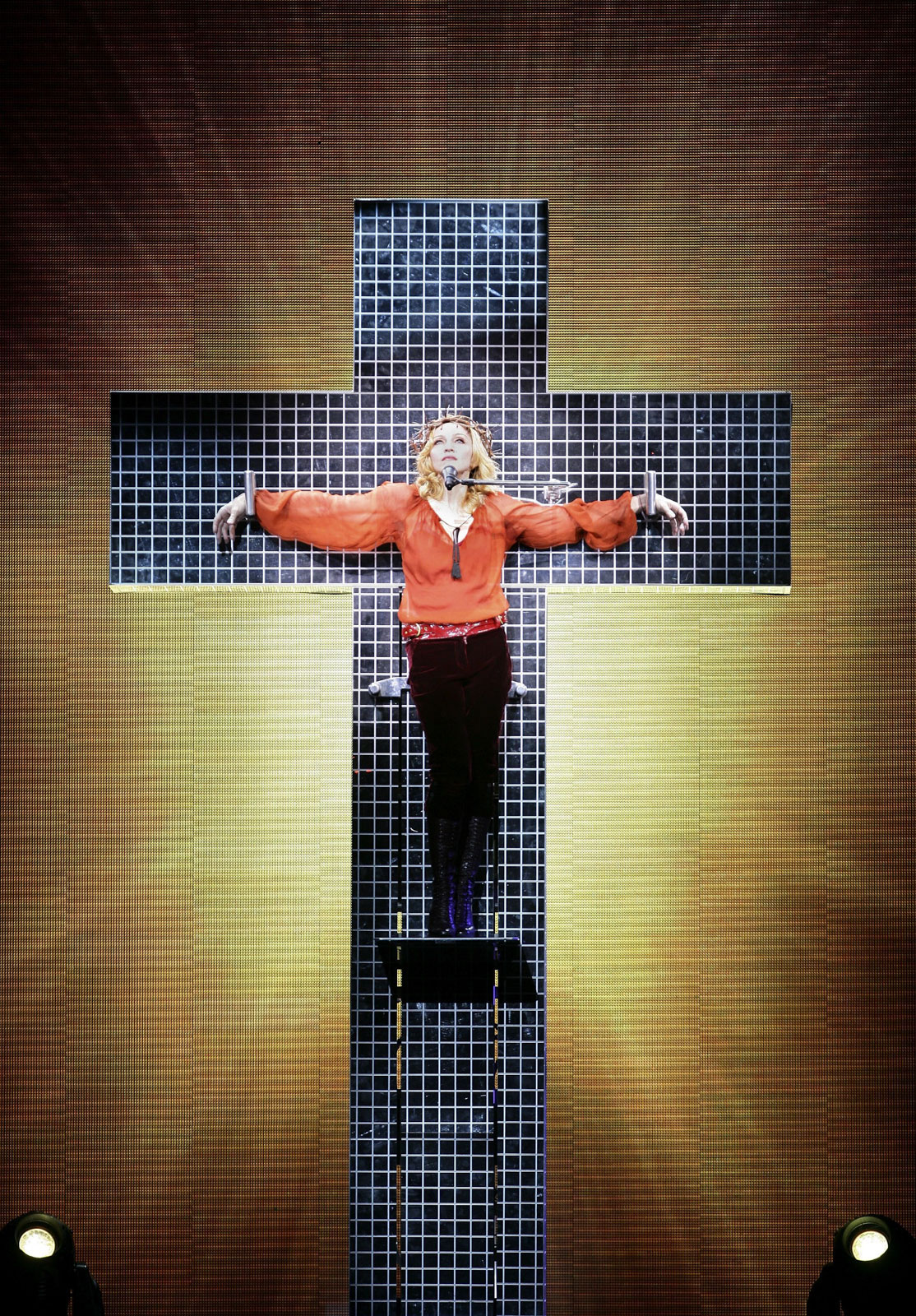
Madonna performs onstage at the first London concert of her “Confessions” World Tour at Wembley Arena 2006 (Photo by Dave Hogan/Getty Images)
‘I look at gigs in a purely visual way. People will ask, “How was the gig?” and I’ll say, “It was brilliant.” Then they’ll ask me what numbers they played, and I’m like, “I’ve no idea, mate.” I’m just viewing it through the camera, thinking about light and shapes and compositions. That’s how my brain works.
‘There’s nothing worse than going along to a gig and there’s no light. But the great thing about modern digital cameras is that you can take pictures in almost total darkness, which has changed from a lot of the early days where you’d be pushing black & white film two stops and hoping you’ve got it.
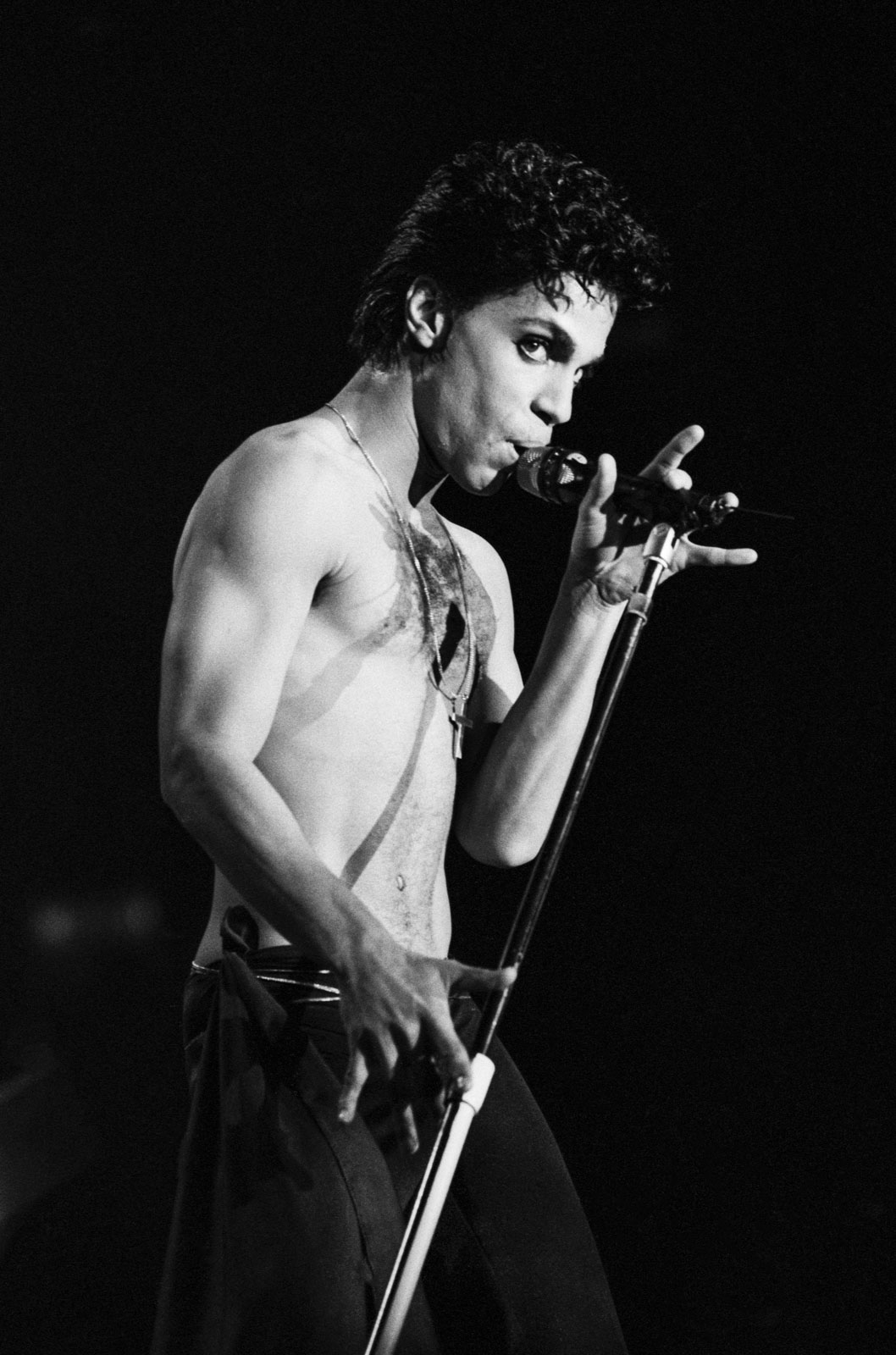
Prince performing on stage at Wembley Stadium, London, August 13th 1986. (Photo by Dave Hogan/Getty Images)
A classic example is the Brit Awards.
‘A classic example is the Brit Awards. It’s very low light and with someone like Harry Styles, he doesn’t stand still. So you’ve got to be on at least 1/500sec or faster to get him sharp. So I’ll be shooting at ISO 5000. ‘I got a picture of Harry at the Brits that got used really well. I checked on the back to be sure I’d got it then I said to my assistant who was with me in the pit: ‘That’s the picture, go and move that now.”
Bear in mind there are 50 other photographers in that pit, good photographers, shooting the same thing. So it’s all about speed. Harry Styles was the first act that was on, and we got probably five national newspapers the next day with that picture. Because I got the shot, and then got it out there first.’
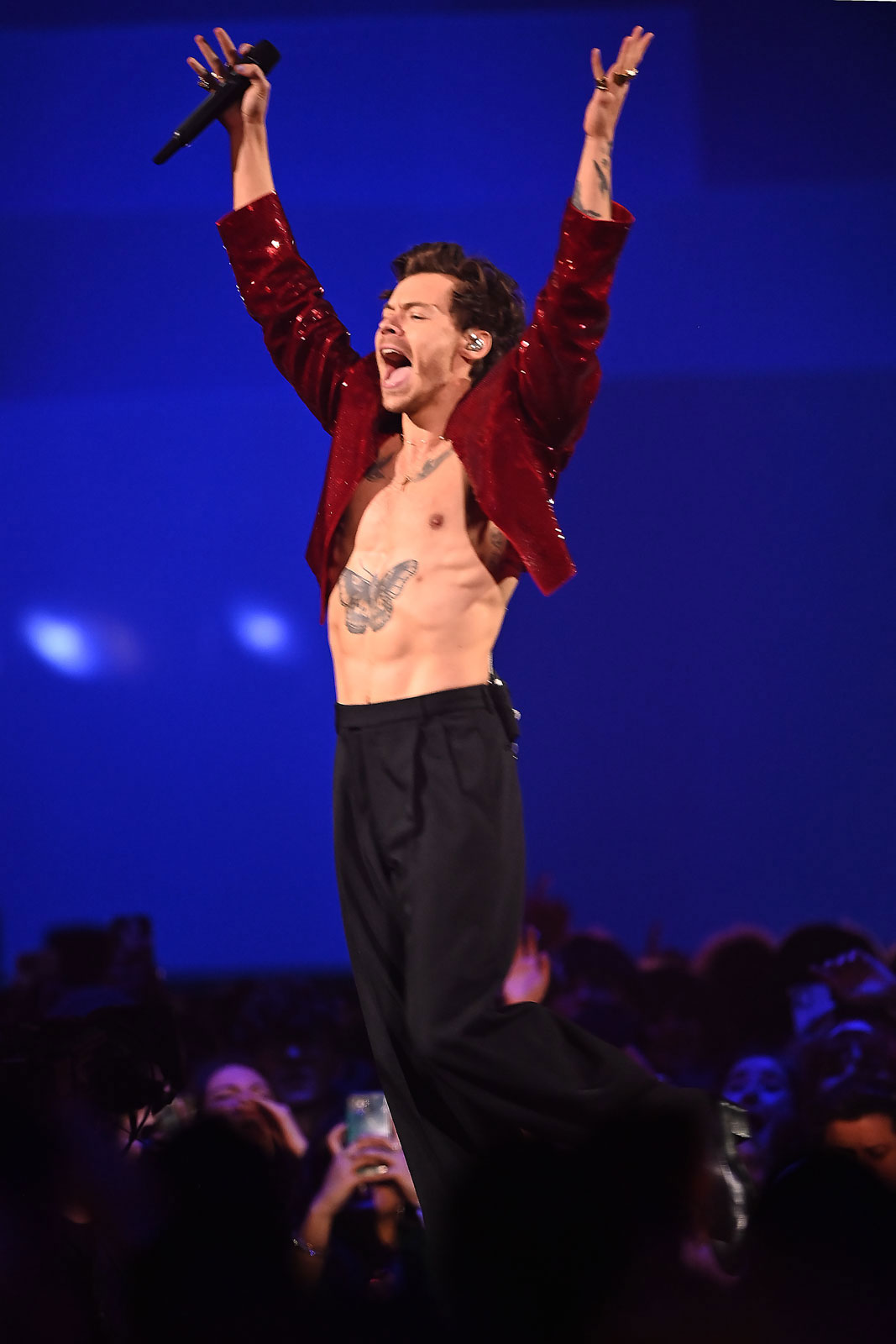
Harry Styles performs on stage during The BRIT Awards 2023 at The O2 Arena (Photo by Dave J Hogan)
‘We have come a long way from having a dispatch rider sitting waiting outside for you to give him a bag of films. When I first started I’d go off to New York on a shoot and fly home with the films. I used to love shooting Kodachrome 64 and would send it to Paris to get processed. Imagine that! There was no real sense of urgency.’
“I take the picture and 30 seconds later it has gone around the world.”
‘Now nobody waits for anything, it has to be available immediately because we’ve got Twitter and so forth. I have a 5G box connected to my Nikon D6. I take the picture and 30 seconds later it has gone around the world. It really is that quick. I have an assistant to remotely edit, and we’ll pre-write the captions.’
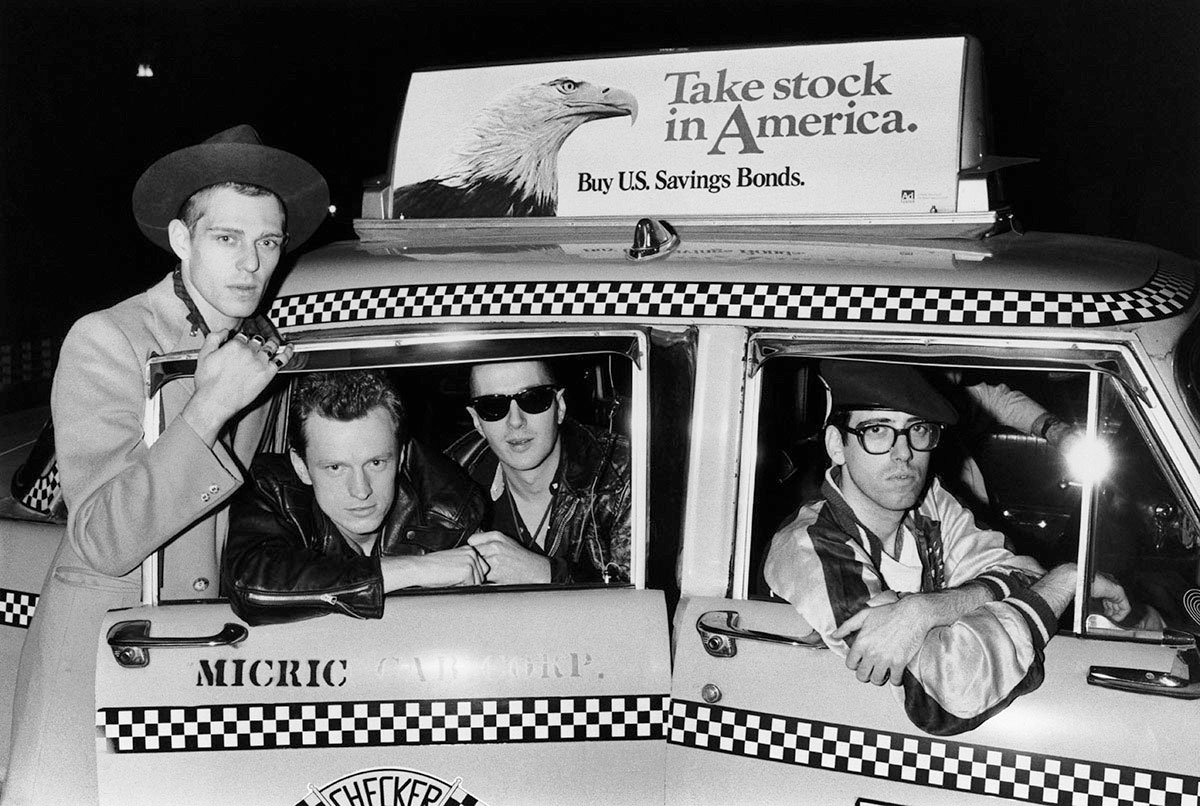
The Clash in New York (Credit: Dave Hogan / Getty Images)
David Bowie backstage at Glastonbury, 2000
While live gigs form the bedrock of his work, Hogie takes every opportunity to get maximum coverage from an event. ‘I’ll shoot the concert but I’ll usually set up a little studio and try to get some pictures beforehand,’ he says. ‘One of my classic pictures was David Bowie backstage at Glastonbury, 2000. He wanted some pictures in his Alexander McQueen coat, and we were in a field in Glastonbury. So I took the bedsheet off my bed, and put it on a clothes line backstage (because in those days it wasn’t the big corporate thing it is now) to use as a background. You have to think on your feet and make something happen.’
Hogie also enjoys shooting backstage dressing room shots. ‘There’s an intimacy with those, and you know that you’ve created an image that nobody has and is going to last. It’s part of history.’
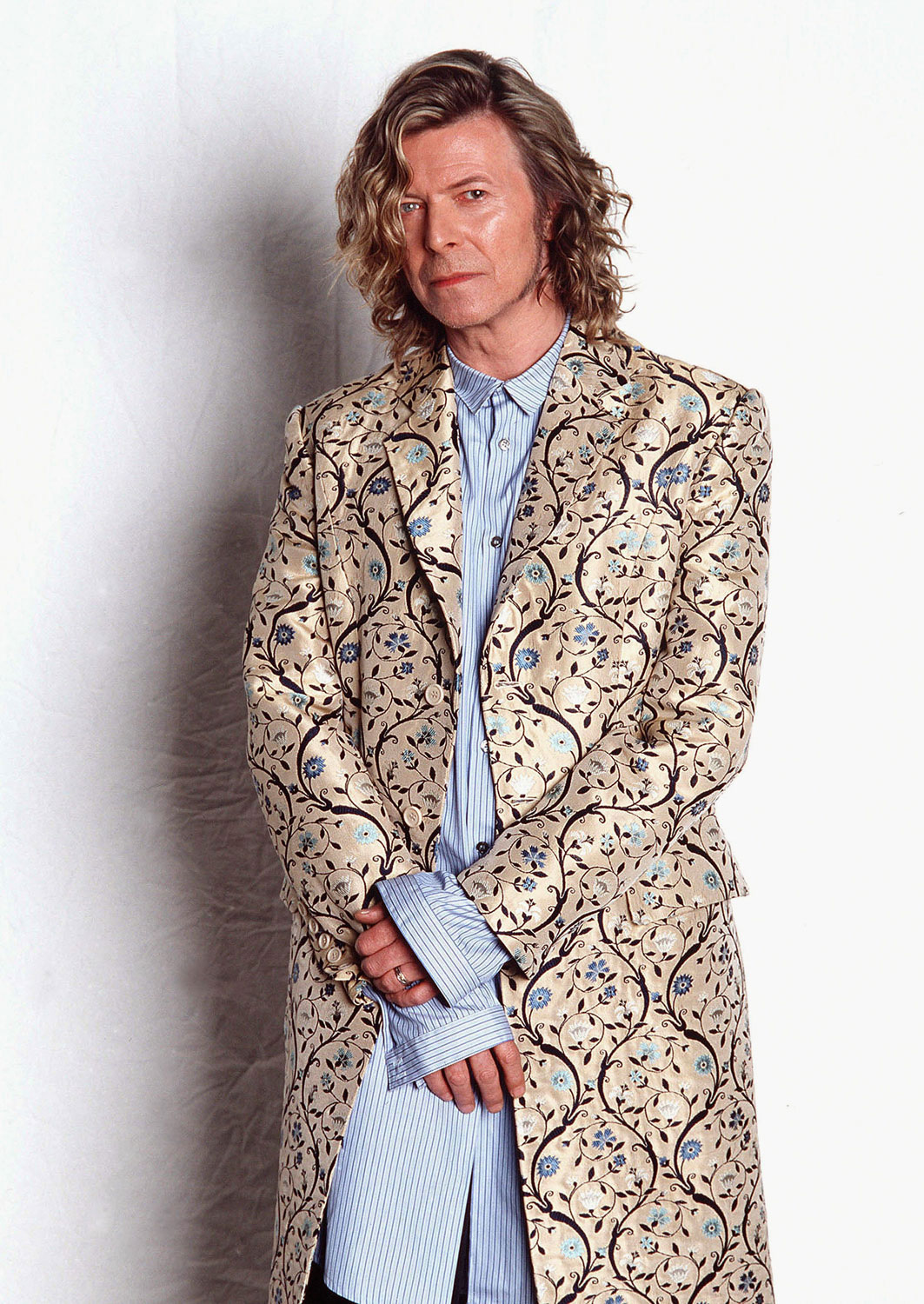
David Bowie poses backstage at the Glastonbury festival, June 2000, in a coat designed by Alexander McQueen, (Photo by Dave Hogan/Getty Images)
‘If they say “You’ve got five minutes”, then you normally know you have two minutes.’
Even pre-arranged portrait shoots are usually shot under time pressure. ‘With a band like The Rolling Stones, if they say “You’ve got five minutes”, then you normally know you have two minutes. But that doesn’t stop you getting there two hours beforehand, setting up and testing with a couple of people so that when they walk in the room you know you’re going to get something decent straight away. On digital, you can shoot really quite quickly, check the back of your camera to make sure you’ve got something, and then maybe suggest a different pose or move to another background, but you’ve got what I would call your banker.

The Rolling Stones (Credit Dave Hogan /Getty Images)
Working for Hello magazine
‘I love working for Hello magazine. Because you’ll be given a few hours to take pictures which is just a dream. You can take lots of kit, everything you’ve got. You can put up a backdrop and use different lighting set-ups. You can take more breaks where you get hair and make-up to come in and check everything. And you come away with an incredible set of pictures.’
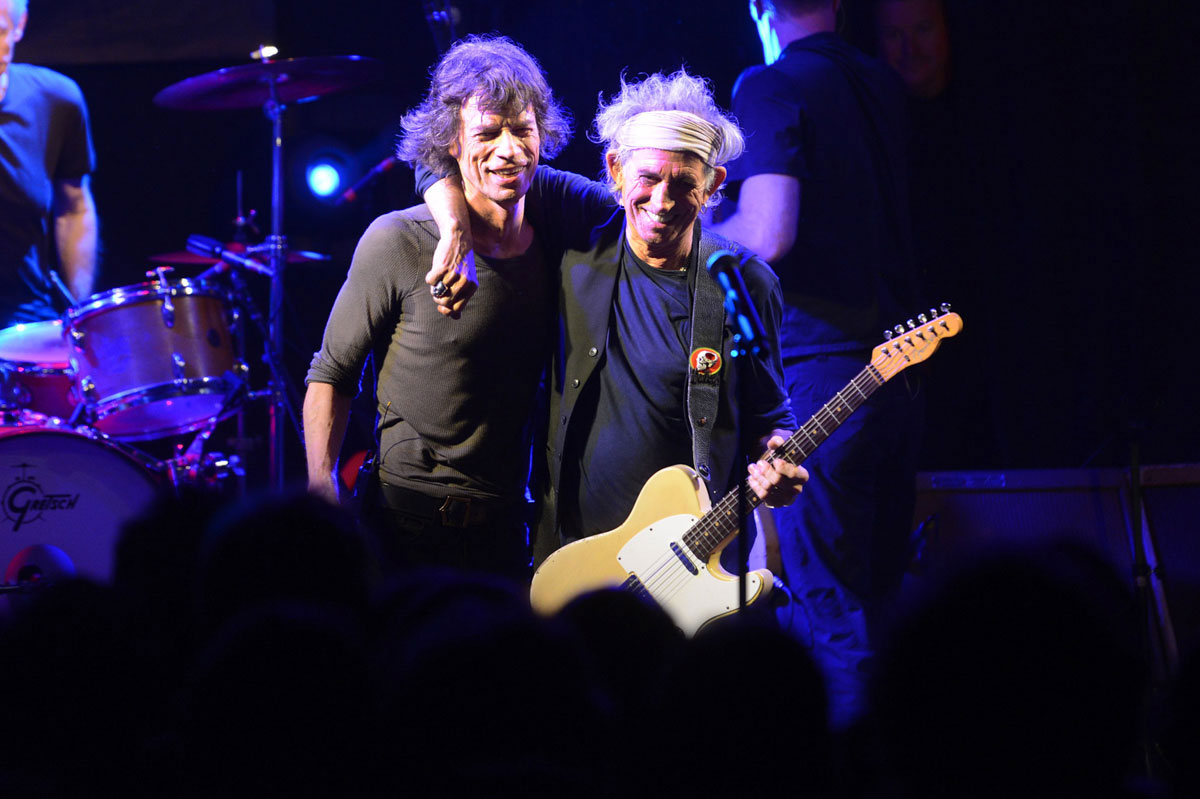
The Rolling Stones: Dave Hogan
Digital vs film
Despite the sense of urgency that the job demands nowadays, in other ways working with digital is much less stressful. ‘In the old days with film, it was a lot more pressure. Because in the back of my mind I’d be thinking, “Oh my god, they’ve flown me to Japan to get this shot, don’t mess up.” So I’d always have two or three cameras. One would be a safety camera, and I’d shoot maybe ten frames just to cover myself, just in case there’s that “what if” moment.
Even now, with digital, a camera could go down or a card could be corrupted (it has happened) so I’ll always shoot something on a back-up camera, just to make sure. Because the people employing you don’t want to hear you had a technical problem, they don’t want excuses, you have to deliver.’
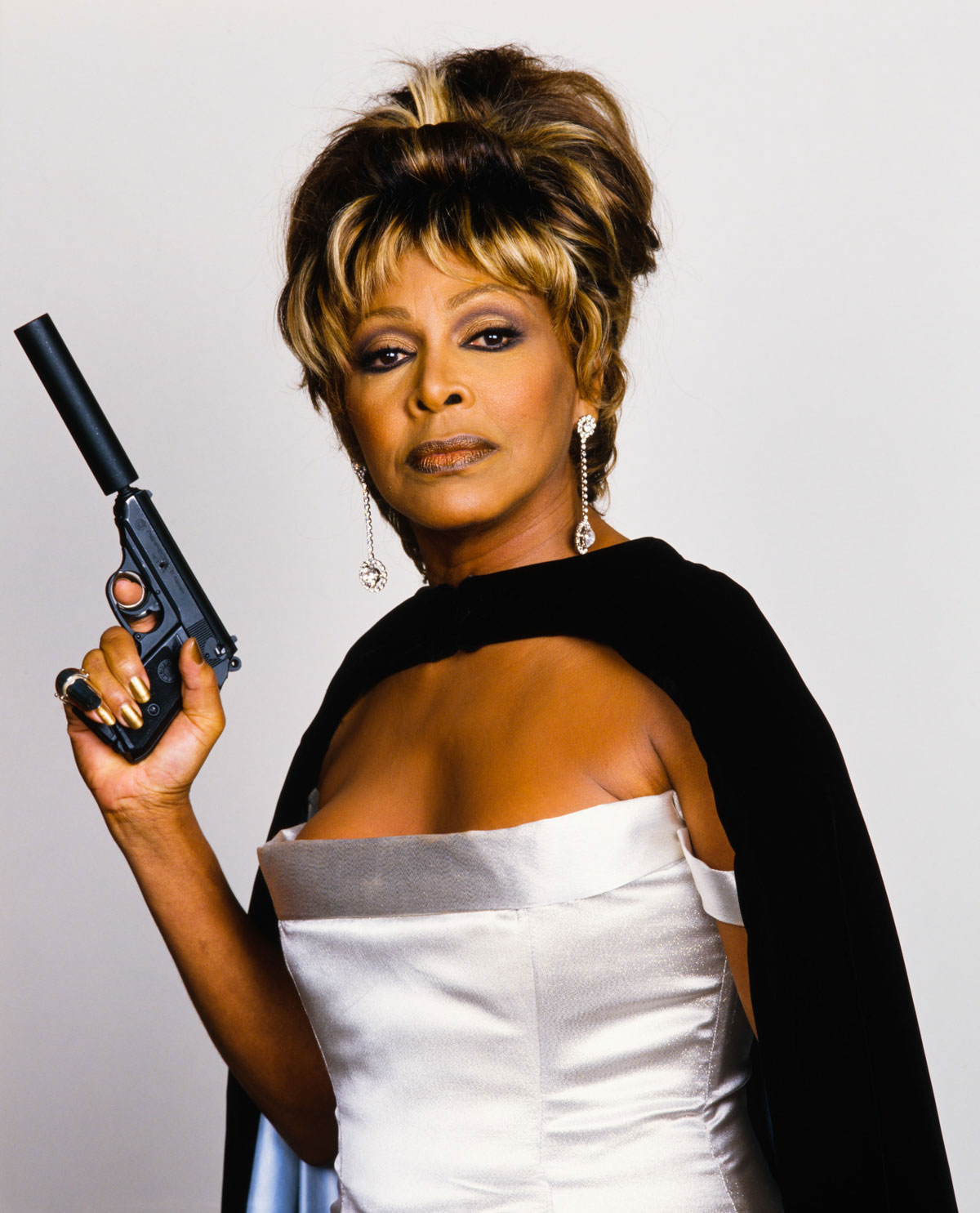
Tina Turner poses with James Bond’s gun during publicity shoots for the film Goldeneye, for which she sung the main theme. (Credit Dave Hogan / Getty Images)
Starting out ‘I went to art college’
Hogie didn’t start out with ambitions to become a photographer. ‘I went to art college and did a ceramics degree – so I could make a nice ashtray,’ he jokes. But I did some photography blocks and Jill Furmanovsky was my photographic tutor for one of them. And it was that block with Jill that made me decide I don’t think I want to do ceramics any more.’
Hogie decided to take a year out from college and went travelling around America with his Nikkormat, and a bag of Kodachrome 64. By the time he returned he knew where his future lay.
‘My first job as a photographer was at the Butlin’s Holiday Camp at Barry Island in South Wales, which was a great way to learn your trade because you were photographing Miss Lovely Legs and Glamorous Granny, and you had to sell these pictures. Then I came to London, saw an advert for a job as a photographer at Stringfellows and thought, “I could do that.” This was during the ’80s, before it was a strip club, when it was the nightclub to be seen in. I was, like, 20 at the time.
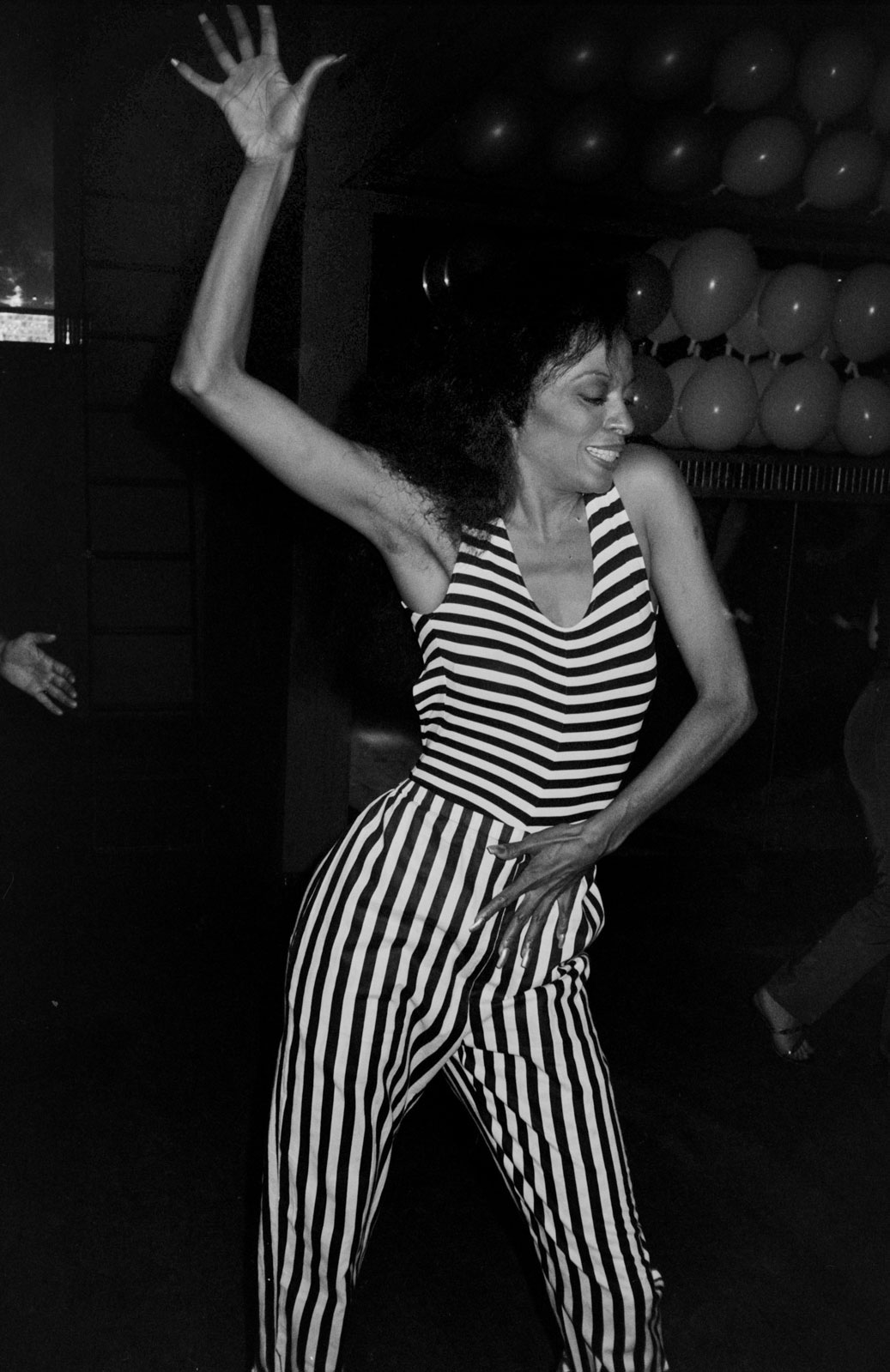
Diana Ross dances at the Embassy Club in London circa 1983 (Photo by Dave Hogan / Getty Images)
‘Peter Stringfellow would basically give a free bottle of champagne to any star that came to his club.’
‘Peter Stringfellow would basically give a free bottle of champagne to any star that came to his club. So if you’re on a promotional tour, it was always good to end up there, get given a carousel for you and your mates. The only thing they had to do in return was have their picture taken with Peter. It was a sort of you scratch my back I’ll scratch yours thing. You had all the pop stars and page three girls and showbiz personalities, and they could go there and not be hassled. Nobody had personal security back then.
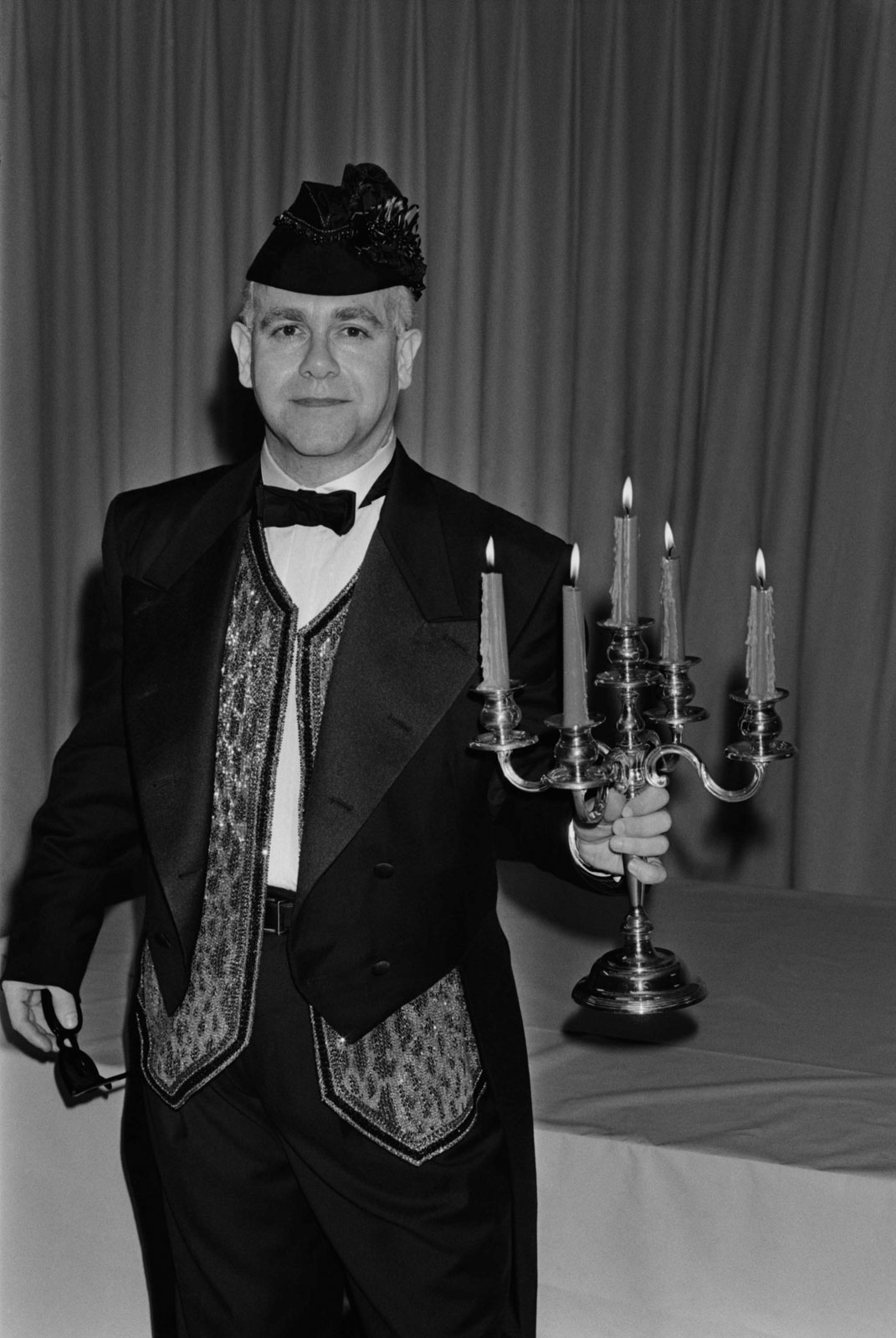
Elton John (Dave Hogan / Getty Images)
‘I had a pager, and I’d get a message from the front desk. “Oh, George Michael’s in, or Elton John is here.” There were no mobile phones, obviously. I’d go down and take a few pictures of them on the dance floor, or whatever, and do the whole social thing. Then at about 3 or 4 o’clock in the morning I’d drop a bag of films off at The Sun’s office in Bouverie Street, then go home and sleep. Then I’d wake up a few hours later, call the picture desk and it would be “great pictures, we’re using so and so”.
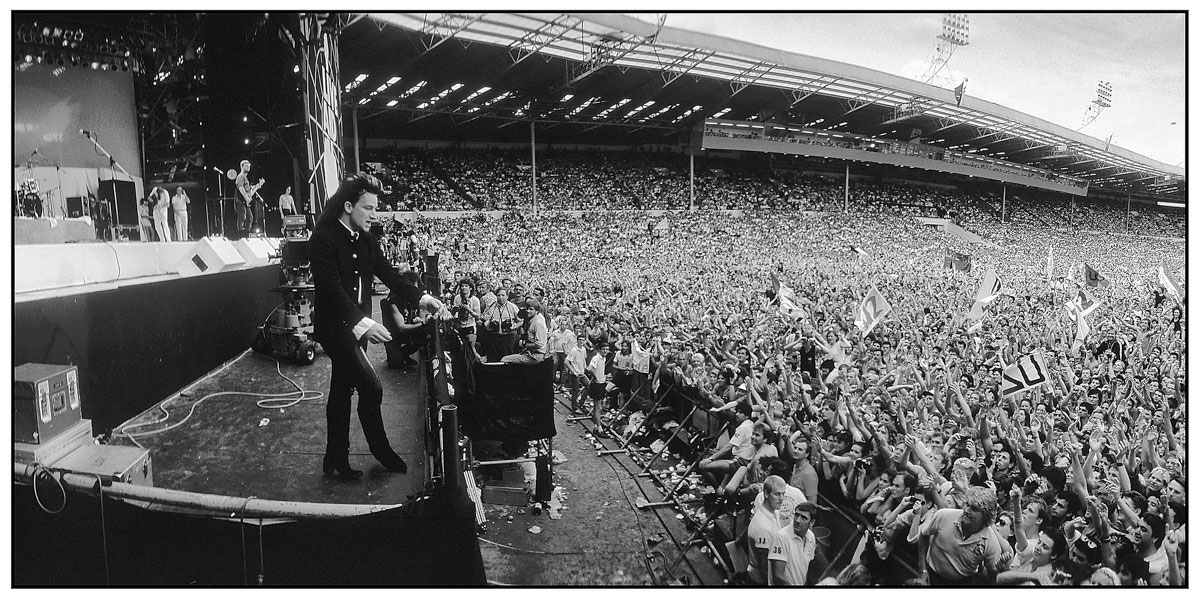
U2 performing at Live Aid, 1985 at Wembley Stadium (Credit Dave Hogan / Getty Images)
‘It was an amazing job but at the time it wasn’t seen that way. All the other photographers wanted to be the next Don McCullin and be a news or war photographer. Why would you want to be a music photographer if you had to work late at night?’
Dave’s visits to The Sun led to him being asked to cover other events for them, and this eventually led to him moving to The Sun full time as their youngest photographer, doing showbiz pictures for their ‘Bizarre’ column. Then through that he developed relationships with the record company execs, managers and the artists themselves.

Hogie backstage at Live Aid, Wembley Stadium, 1985 (Credit Dave Hogan / Getty Images)
‘In those days, if Michael Jackson or Madonna or whoever were on tour they would call The Sun because there was no social media, and if they got a page three picture or a spread in the paper that helped them go up the charts. It was a very different time. Nowadays they don’t need newspapers any more, they just tweet it or do an Instagram post.’
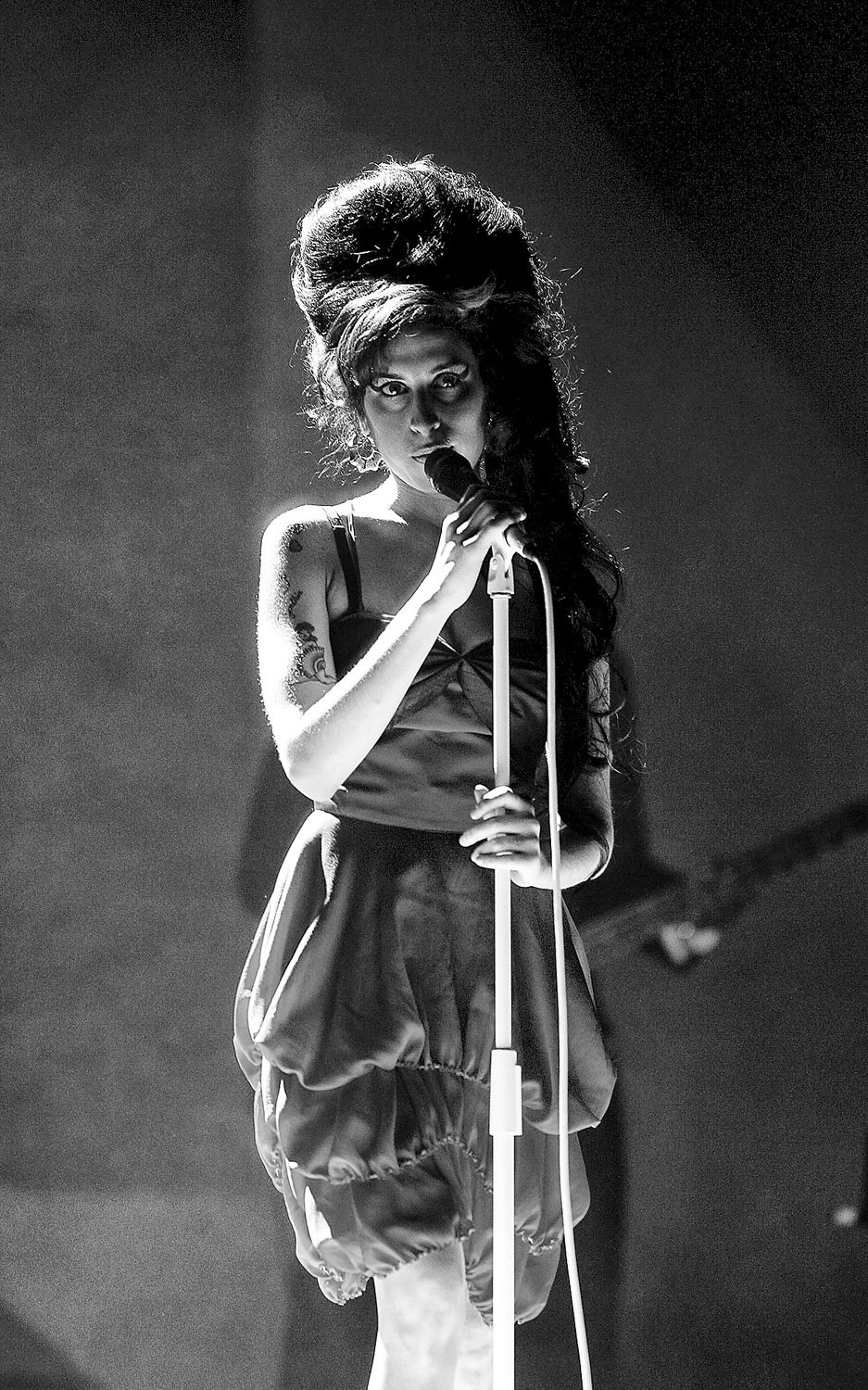
Amy Winehouse rehearses on stage prior to the BRIT Awards 2007 at Earls Court (Photo by Dave Hogan/Getty Images)
Record companies paid.
To anyone who loves music and travel Dave had an enviable lifestyle. ‘I went around the world five or six times, filled my passport five or six times. Record companies paid. Somebody else picked up the bill up and I just went along. It was: “Do you wanna go to Japan tomorrow?” Or “Do you want to go to America?” And I just said yes. I mean, it wasn’t always the best thing for your relationships, but I did what needed to be done. If they’d called up and I said no, or “I’m just going to check with the family” they’d have gone to the next person, and they don’t come back. You have to be their first choice. The moment they have to start going through their Rolodex you’ve lost them.’
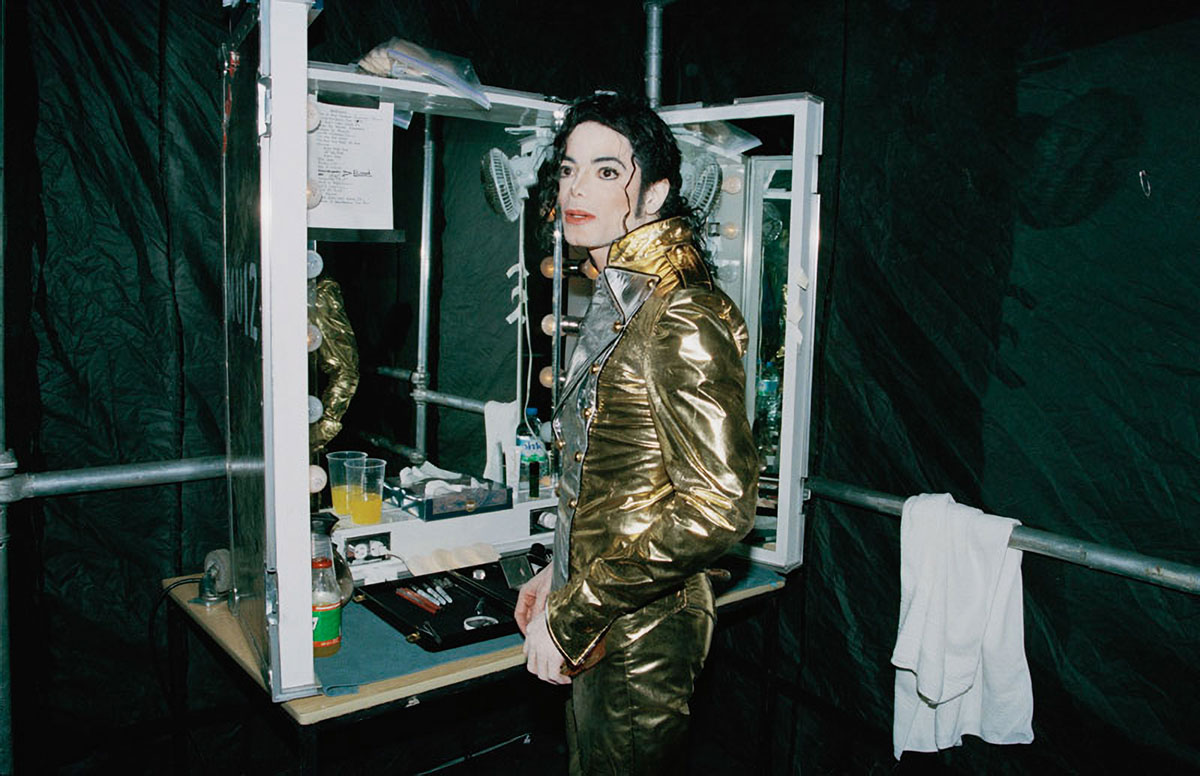
Michael Jackson backstage, 2006 (Credit Dave Hogan / Getty Images)
Throughout this period Hogie was a freelancer, on a retainer, so he owned his pictures. When the world went digital he sold his company to Getty Images so then, instead of his work just going to The Sun it went everywhere, thanks to the subscription agreements Getty had with all the newspapers.
Hogie’s Kit ‘I love my Nikons’
Hogie has used Nikon cameras pretty much exclusively throughout his entire 40 year career. ‘I love my Nikons,’ he says. ‘In the 1980s I used the FE. Now I use Nikon D6s for most of my work. The file size is great, and the electronic sending with my 5G is really good, but I also have their mirrorless camera, the Nikon Z6, which is a lot smaller, and I love that too. I need to know when I pick up my camera that it’s gonna work a certain way, and I don’t have to think about it.’
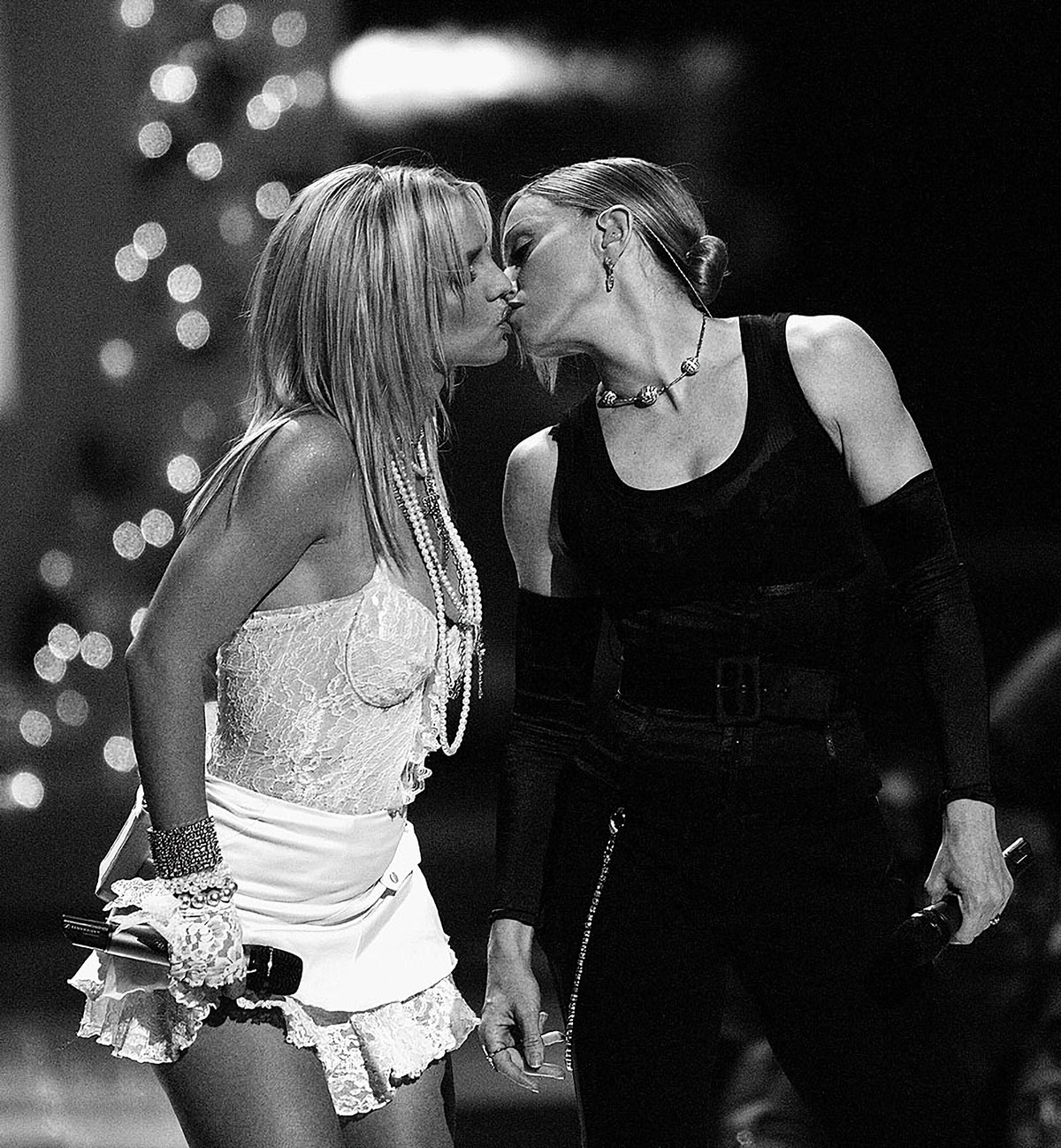
The famous Madonna and Britney Spears kiss (Credit: Dave Hogan / Getty Images)
In the early days of digital, cameras like the Nikon D1 and Nikon D100 were still very much a work in progress, and this fact became all too apparent during a now-iconic moment at a Madonna gig in 2003. ‘I forget which camera we were all using at the time but if you kept your finger on the shutter it would keep taking pictures, but then you’d hit like the 10th frame and it would just stop and you’d have to wait for the memory card to catch up.
The technology wasn’t quite there yet.
So anyway, Madonna came out with Britney Spears and Christina Aguilera on either side of her and they started walking down this runway. When they got to the end of the stage they stopped and Madonna turned to kiss Britney. Everyone’s cameras went mad – bom bom bom bom – to capture that split-second moment when their lips connected. Then Madonna turned the other way and kissed Christina, but everyone’s cameras were buffering all the Britney pictures, and nobody got that shot. But you know it was the same with film. You’d have your 36 exposures and the amount of times something would happen while you were changing your film.’
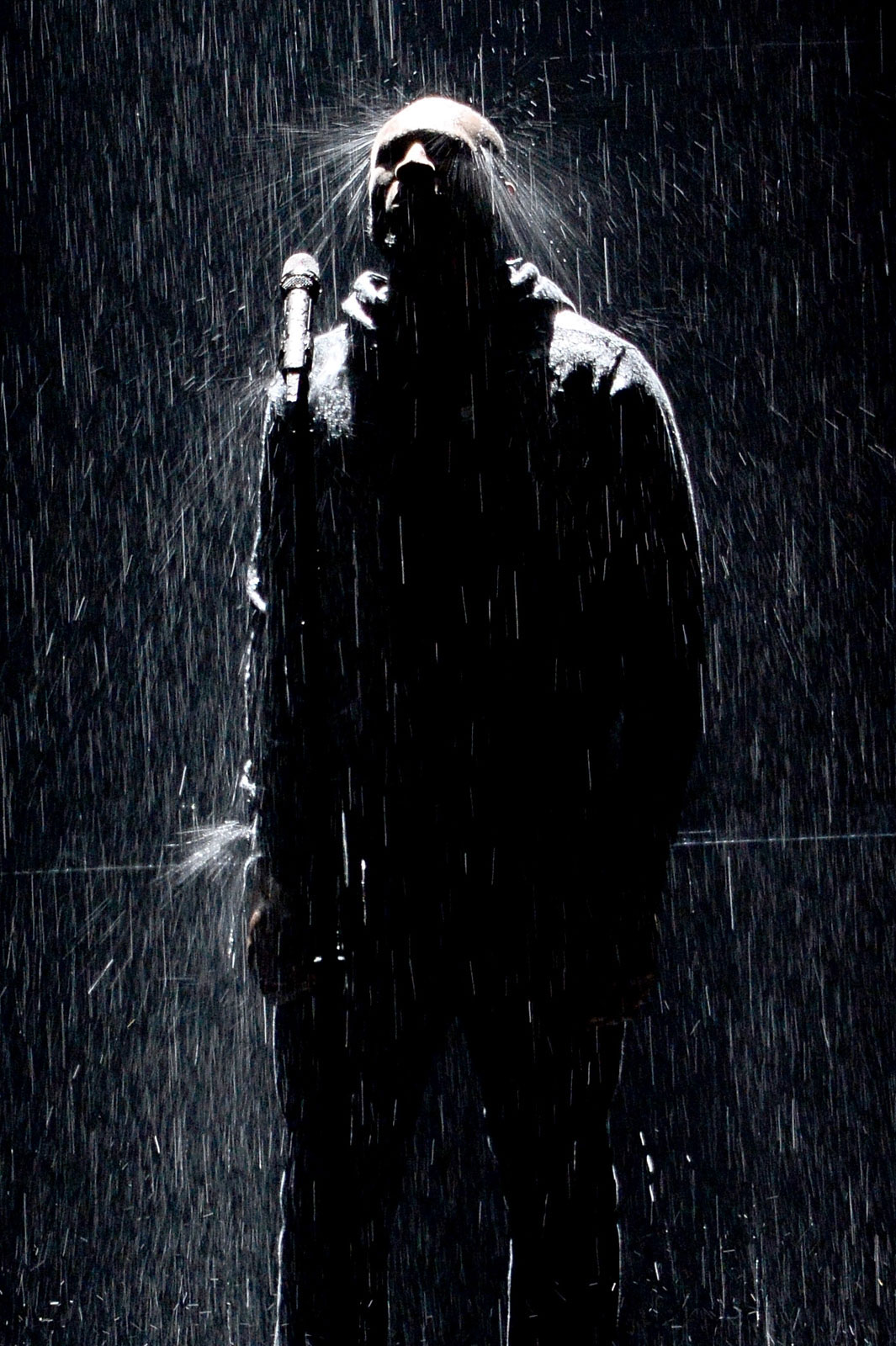
Stormzy performs on stage at The BRIT Awards 2018 at The O2 Arena (Photo by Dave J Hogan/Dave J Hogan/Getty Images)
Lens choices
When it comes to lenses Hogie’s go-to optic is Nikon’s 24-70mm zoom, but if he has a bit more time he might switch to a 50mm prime. If he’s shooting a gig he prefers to be at the back with the 600mm f/4, or the 400mm f/2.8.
‘The pictures just look more natural, and you get a nice clean background rather than being in the pit looking up their noses. But I’ll shoot from the pit too, which is good for dramatic wideangle shots with all the lights.’
For studio lighting Dave has always used Elinchrom although more recently he has switched to Profoto Bs. ‘I’ve still got my big 2m square “Annie Leibovitz” softbox, which I’ve had for about 20 years.’
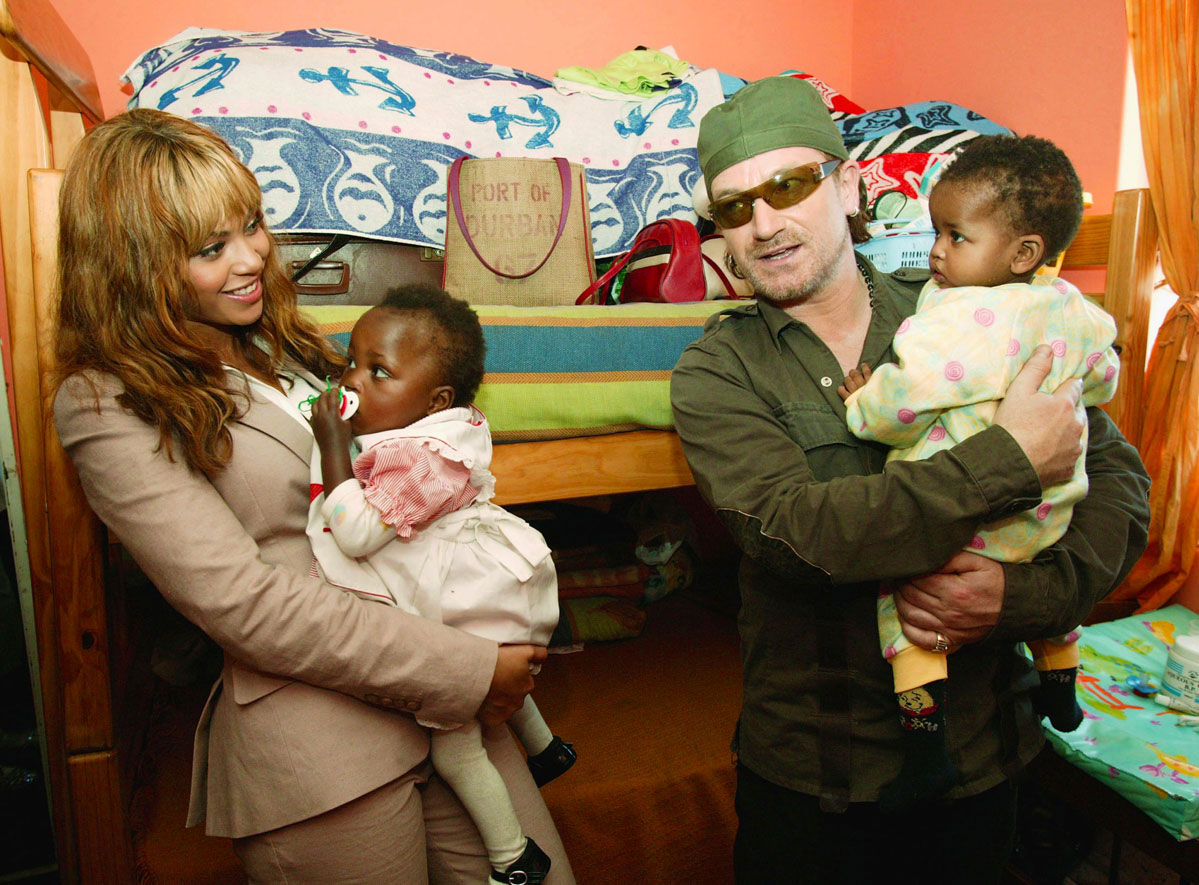
Beyonce and Bono of U2 visit a children’s home in South Africa, 2003, on behalf of the Nelson Mandela Foundation. The AIDS epidemic hit South Africa hard, leaving thousands of children orphaned and homeless. (Credit: Dave Hogan / Getty Images)
‘I love Annie Leibovitz, …but my favourite photographers are people like Anton Corbijn’
This brings us round to the subject of which other photographers he most admires. ‘I love Annie Leibovitz,’ he says. I love Bailey’s stuff too. And Rankin’s. But my favourite photographers are people like Anton Corbijn, who did all the old U2 stuff. U2 are my favourite group.
I was in South Africa with Bono, for the Nelson Mandela Foundation. And Anton Corbijn was there too, as a friend, doing his own stuff. At one point there was just me, Anton and Bono, and I said to Bono, “I’ve got to tell you, I may be here to photograph you, but he’s my hero.” And Bono laughed and said, “He’s my hero too.” Anton’s pictures pretty much defined U2. I’m actually going to the Joshua Tree National Park in August with my girlfriend. We’ve hired a Winnebago for a week and I want to go and find where that cover was taken.’
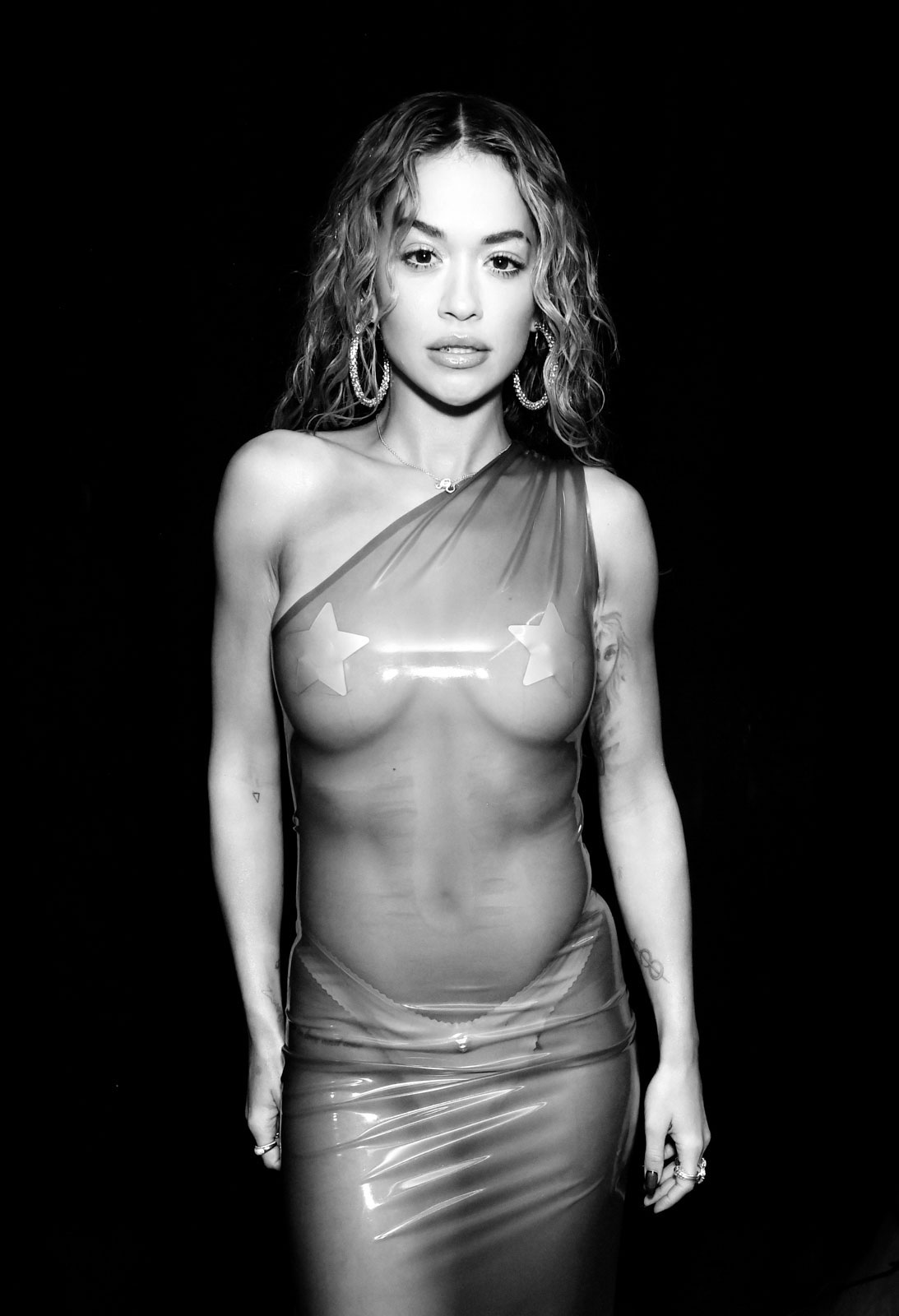
Rita Ora at Heaven nightclub, London in 2022
What about favourite artists?
Surely some are more enjoyable to photograph than others? ‘I get on well with Mick Jagger, obviously. I’ve photographed him a lot,’ Hogie confesses. ‘Tina Turner is one of the best subjects I’ve ever worked with. So professional, and a really lovely lady too. Of the younger artists, Taylor Swift, Rita Ora and Pink are great. Harry Styles is amazing. He’s cool but he’s also a really nice person. I’ve worked with him a lot, been in helicopters with him. Some people can really go off the rails when they get that level of fame, but Harry is just really nice.
I photographed Rita Ora last month at Heaven nightclub. With gigs like that you know that she’s not going to go on stage till 1am, so I’ll take a kip for a few hours in the afternoon. Because you’ve got to be on the ball – you can’t be the old fart in the corner, half asleep. I got the shots and it was used in all the newspapers and magazines because of what she was wearing.’

Florence Welch of Florence and the Machine performs at The Brit Awards 2012 (Photo by Dave Hogan/Getty Images)
Hogie has no plans to retire any time soon
Music photography may seem like a young person’s game and there are plenty of youngsters snapping at his heels but Hogie has no plans to retire any time soon. ‘I’ve been lucky enough to earn good money from this job, but I don’t do this job for the money,’ insists Hogie.
‘You have to love going out and shooting concerts and award shows or whatever, because it’s really quite antisocial. When everybody else is finishing work, that’s when my work starts. And there are times when you really just want to sit down of an evening and watch TV but you’ve got a gig to shoot. But I never wake up and think, “Oh, my God, I’ve got to go to work today.”’ And I know that very few people can say that.
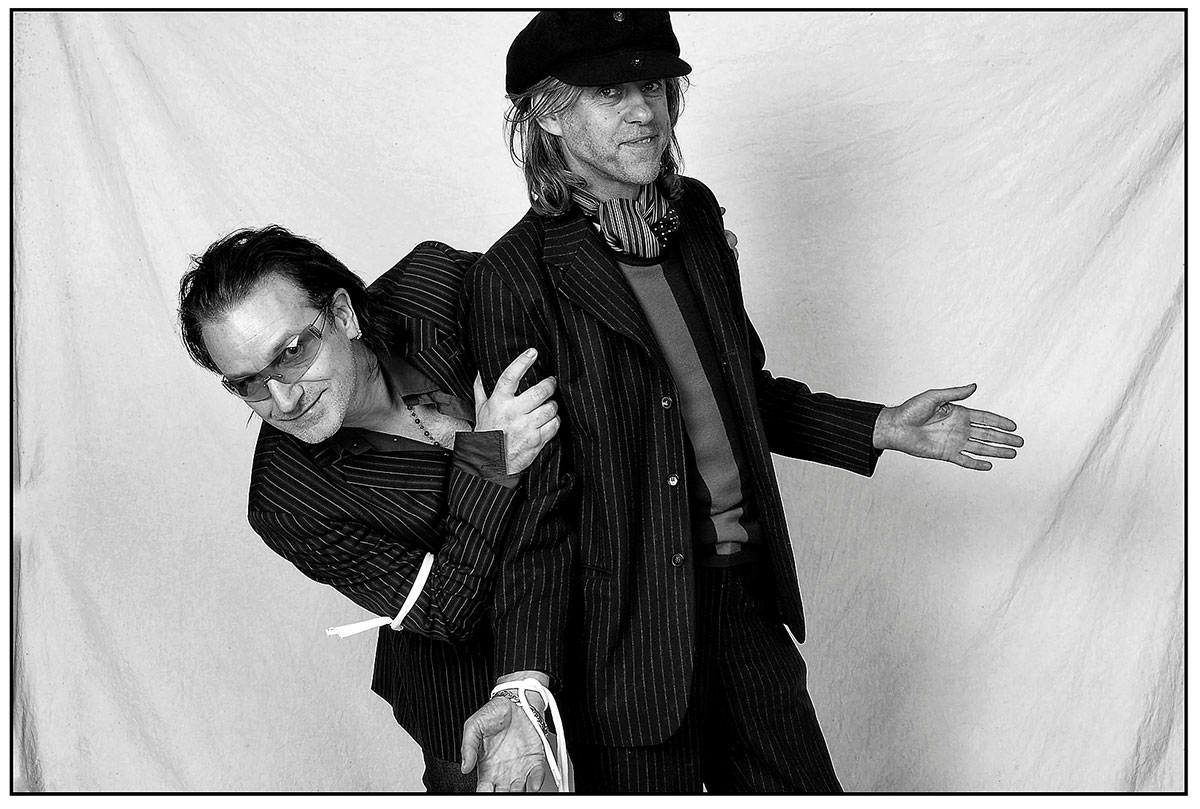
Bono and Bob Geldof (Credit: Dave Hogan / Getty Images)
Get in touch with Dave Hogan on Dave Hogan’s website, and on Instagram: @hogieaaa__
Related reading:
- Portrait photography guide
- Guide to music and event photography
- So.Co Music Photographer of the Year awards
- Best Nikon mirrorless cameras








